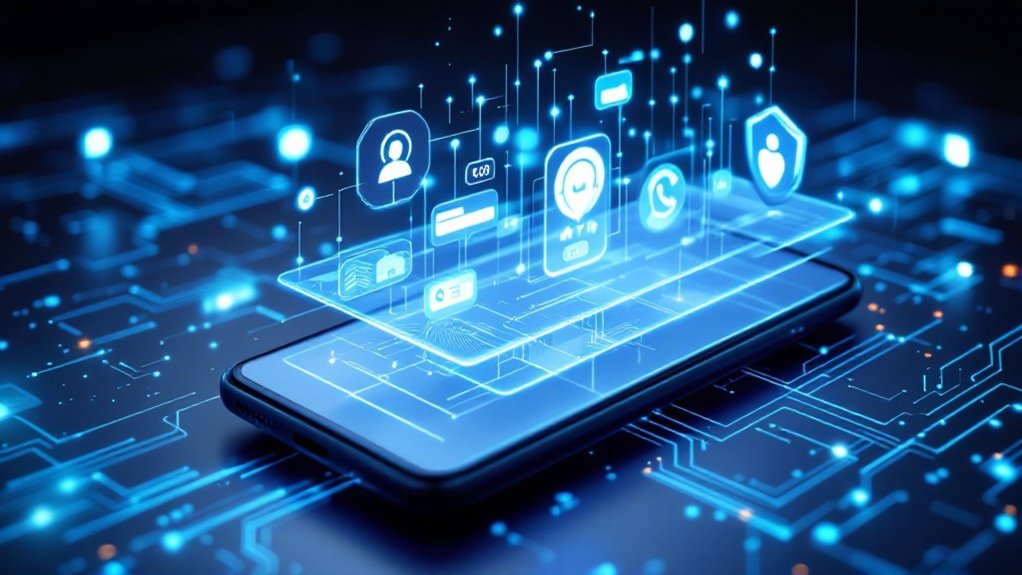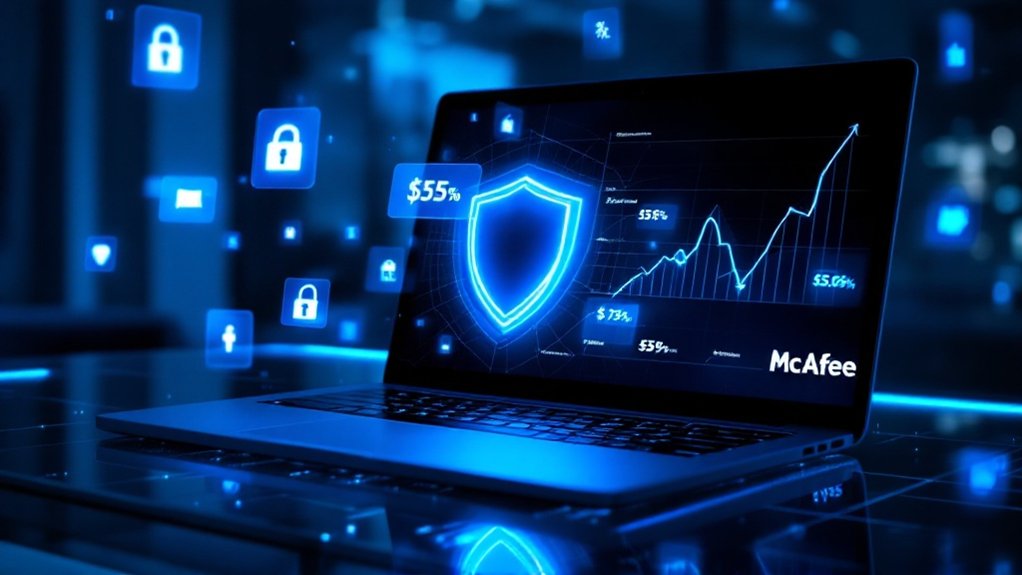SpyX operates as a thorough mobile monitoring software, accessing device cameras, microphones, and social media platforms through direct APK installation or cloud synchronization. The system extracts extensive data, including deleted messages and keystrokes, during maintaining stealth functionality under a system app name. Following a significant June 2024 breach exposing 1.97 million accounts, the software’s surveillance capabilities raise critical cybersecurity concerns regarding user privacy and data protection. Further technical analysis reveals complex implications for digital security.

As cybersecurity concerns mount in 2024, SpyX, a controversial mobile monitoring software developed by a UK-based company, has emerged as a significant player in the digital surveillance arena. The platform, marketed primarily as a parental control tool, offers thorough monitoring capabilities across both Android and iOS devices, targeting 15+ social media platforms during tracking calls, texts, and real-time location data.
The software’s technical architecture facilitates data collection through two distinct installation methods: direct APK installation or Google Cloud sync for Android devices, and iCloud synchronization for iOS systems. Operating covertly under a system app name, SpyX extracts extensive data, including deleted messages, keystrokes, and screenshots of social media interactions, whilst maintaining a stealth presence on the monitored device. Similar to NSO Group’s technology, SpyX can access device cameras and microphones without user awareness. The platform’s 24/7 customer support ensures users receive immediate assistance with installation and technical issues. The pricing structure starts at $49.98 per month for monitoring a single device.
SpyX’s implementation of data gathering mechanisms extends to thorough tracking of device activities, including web browsing history and Wi-Fi network connections. The collected information is presented through a web-based dashboard, allowing monitors to access organized data displays, though some features lack real-time monitoring capabilities and advanced functionalities such as app blocking.
However, the platform’s security infrastructure has demonstrated significant vulnerabilities. A major data breach in June 2024 compromised 1.97 million user accounts, exposing email addresses, passwords, and 17,000 Apple iCloud credentials. The company’s apparent failure to notify affected users of the breach raises serious concerns regarding compliance with UK and US data breach disclosure regulations.
The software’s deployment raises critical legal and ethical considerations within the cybersecurity environment. Although marketed for legitimate parental monitoring purposes, the platform’s ability to operate without user consent presents potential legal complications.
The absence of vital security features such as geofencing, remote locking, and data wiping capabilities further compounds concerns about user privacy and data protection. These factors, combined with the recent security breach, highlight the complex balance between surveillance capabilities and responsible data stewardship in modern digital monitoring solutions.
Frequently Asked Questions
Can Spyx Detect and Prevent Ransomware Attacks in Real-Time?
SpyX lacks real-time ransomware detection capabilities, as confirmed by its product specifications and technical documentation.
The software’s primary functions focus on surveillance and monitoring rather than cybersecurity threat detection.
Analysis of SpyX’s features reveals no anti-ransomware algorithms, threat scanning protocols, or integration with cybersecurity databases.
The June 2024 data breach, exposing 1.97 million records, further demonstrates SpyX’s limited cybersecurity protections.
What Is the Average Cost of Implementing Spyx for Small Businesses?
Although SpyX does not publicly disclose pricing, industry analysis suggests small businesses typically invest $2,000-5,000 for initial implementation, including setup fees and basic training.
Monthly costs range from $20-50 per monitored device, with additional expenses for data storage and maintenance.
Total first-year costs for a 10-device deployment usually fall between $4,400-11,000, accounting for setup, licensing, and operational expenses.
Does Spyx Work Effectively With Other Existing Cybersecurity Tools?
SpyX demonstrates significant compatibility issues with existing cybersecurity infrastructure.
The software operates independently and often conflicts with antivirus programs, firewalls, and enterprise security solutions.
Security experts note that SpyX lacks formal integration capabilities with major cybersecurity platforms and may bypass established security protocols.
Its operation outside standard IT security frameworks, combined with its tendency to trigger security alerts, makes it problematic for organizations with extensive security systems.
How Often Does Spyx Require Updates to Maintain Optimal Security Performance?
SpyX requires regular updates according to a multi-tiered schedule: critical security patches are released monthly, feature updates occur quarterly, and major version upgrades happen bi-annually.
iOS versions update automatically through iCloud synchronization, whereas Android installations need manual updates.
The platform’s optimization cycle focuses on vulnerability patching, performance improvements, and compatibility updates to maintain strong security protocols against emerging threats.
Can Spyx Be Customized for Specific Industry Compliance Requirements?
SpyX offers extensive customization options for industry-specific compliance requirements, including HIPAA, PCI-DSS, and SOX standards.
The platform’s adaptable framework allows automated compliance checks, risk assessments, and policy development tailored to each sector’s regulations.
Through real-time monitoring and customized reporting tools, SpyX maintains continuous compliance as it adjusts security measures based on regulatory changes and emerging industry threats.









